“The best journeys answer questions that, in the beginning, you didn’t even think to ask.”
My time in Jibhi provided me with this experience in ways I could never have imagined.
On a beautiful morning, watching a golden sunrise change the ancient cedar forests around me and with not a single soul in sight, it finally dawned on me why this secret village in Himachal Pradesh remains one of India’s hidden treasures.
This was my third time visiting Jibhi in April, and I can honestly say there is no better time to visit this gem in the Banjar Valley.
Jibhi in April is blessed with the most perfect temperatures (between 15 and 25 degrees Celsius), blooming rhododendrons, and views of the mountains that summer haze often prevents seeing as clearly as we did. The crowds haven’t yet arrived, so you can really get a feel for this beautifully stunning place.
Having been there multiple times and spoken to the locals, I have put together this quick guide of the best places to visit in Jibhi in April, and I am sure it will elevate your magical trip into something incomparable.
Best Places To Visit In Jibhi In April
जालोरी दर्रा

As I struggle my way up to Jalori Pass, I catch the first rays of the sun illuminating the distant summits of the snow-covered peaks. Located at 10,800 feet, it’s the highest easily accessible point in this region from Jibhi, and one can’t get over the breathtaking all-around views of the Greater Himalayas. I have never seen bluer skies!
Why visit in April: The road to Jalori usually reopens to visitors in early April after winter closures, so you’ll likely be one of the first visitors of the season. The meadows and hillsides blooming with purple and pink wildflowers allow for fantastic photographs with snow-capped backgrounds of peaks.
Insider tip: Start early (before 7 AM) to avoid afternoon clouds that often obscure the views. Pack a thermos of chai and some local siddu (steamed bread) from Jibhi’s bakery for a rewarding breakfast at the top.
Serolsar Lake
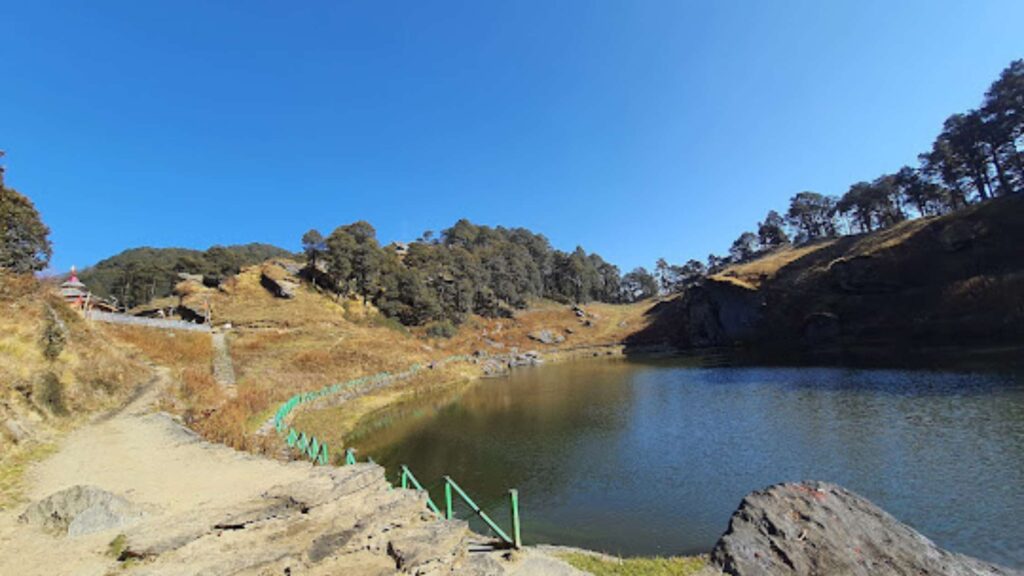
“You might meet Budhi Nagin, the serpent goddess who guards this lake,” my local guide Ramesh told me with a mysterious smile as we trekked through ancient forests from Jalori Pass. Though I didn’t encounter any mythical beings, the emerald waters of Serolsar Lake surrounded by towering deodars created their own magic.
The holy lake is located at an altitude of 10,000 feet~ which requires a 5Km trek from Jalori Pass~ and is one of the most beautiful forest experiences I have had. The earthy scent of pine and the calls of rare Himalayan birds created a memory that will never fade.
Why visit in April: The trail is often muddy but passable, with fewer trekkers than summer months. The forest floor will be full of wildflowers that usually bloom during spring. The rare stray Western Tragopan pheasant can often be seen in the lush location if you’re lucky!
Experience enhancer: Sit silently by the lake for at least 20 minutes. I watched the clouds’ reflections dance across the water’s surface while listening to the forest breathe—it was genuinely meditative.
Chehni Kothi

My neck ached as I gazed up at the improbable tower of Chehni Kothi. How did they build this 50-foot stone and wood structure over 1,500 years ago without modern equipment? The structure seemed to defy both gravity and time.
This ancient tower in the nearby village of Chehni showcases remarkable Himalayan architecture. Built without using a single nail, it has survived centuries of earthquakes and harsh weather. The intricate woodwork tells stories of a bygone era.
Why visit in April: The surrounding apple orchards begin blossoming in April, creating a stunning backdrop for this historic monument. The village’s terrace farms show the first signs of green after winter, making for spectacular photographs.
Cultural insight: Remove your shoes before entering the lower floor of the tower, which serves as a temple. Locals believe the structure has survived so long because of divine protection. Leave a small donation to support preservation efforts.
Shringa Rishi Temple
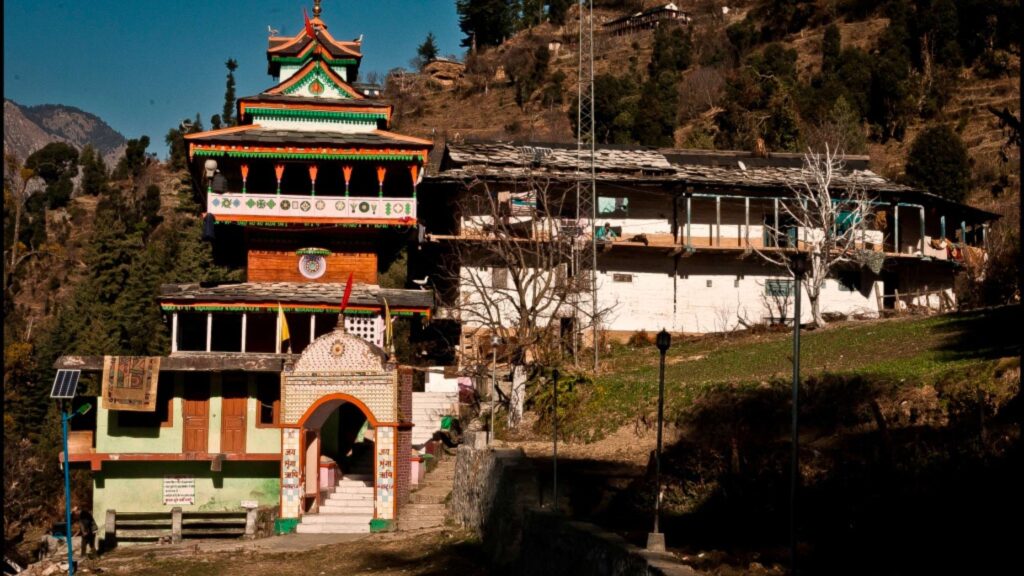
“This temple contains one of Lord Shiva’s 12 jyotirlingas,” whispered the elderly priest as he blessed me with sacred ash. Whether you believe the legends or not, there’s something undeniably powerful about this ancient wooden temple.
Located in Bagi village near Jibhi, this 900-year-old temple is dedicated to Shringa Rishi, a sage from Hindu mythology. The intricate woodcarvings depicting scenes from the Mahabharata left me spellbound for hours. Each panel tells a story more fascinating than the last.
Why visit in April: The temple hosts special ceremonies during Ram Navami (which usually falls in April), when devotees from surrounding villages gather for celebrations. It’s a cultural immersion you won’t find in guidebooks!
Respectful visitor tip: Women should cover their heads when entering the inner sanctum. Mornings before 9 AM offer the most peaceful experience, as the priest has more time to explain the temple’s significance.
Chaini Fort
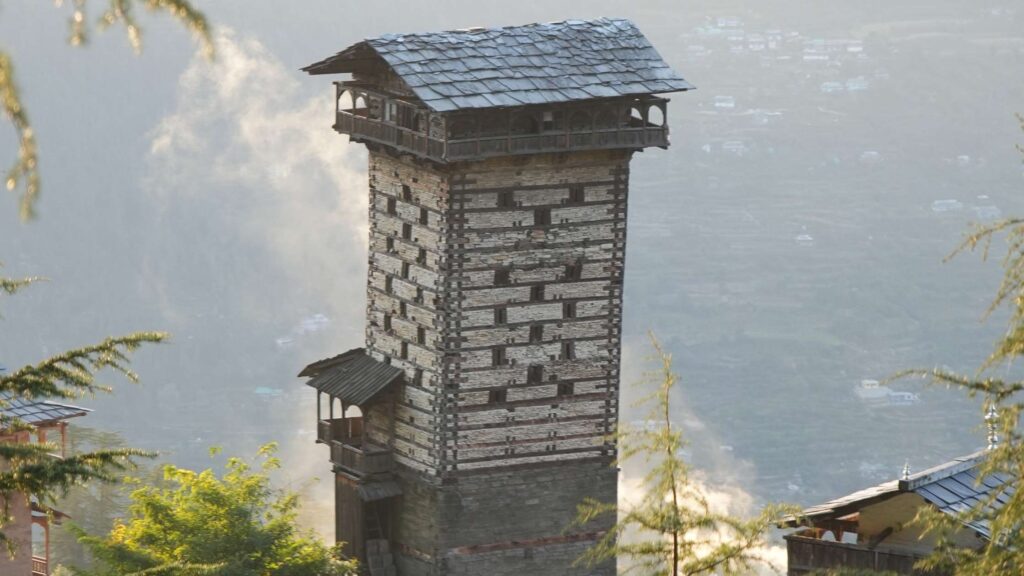
Standing atop the crumbling walls of Chaini Fort, I watched dramatic clouds cast moving shadows across the valley below. It was easy to understand why ancient rulers chose this strategic location.
This lesser-known gem lies just 7km from Jibhi. The partially restored fort offers insights into the region’s medieval history and commands spectacular views of the Banjar Valley. I spent a peaceful afternoon sketching the landscape from this perfect vantage point.
Why visit in April: The comfortable hiking weather makes the uphill walk to the fort enjoyable rather than exhausting. Spring flowers bloom among the ruins, creating an enchanting contrast between nature and history.
Photography tip: Visit around 4 PM for the best light. The golden hour here transforms the valley into a photographer’s paradise, with long shadows emphasizing the dramatic topography.
Jibhi Waterfall
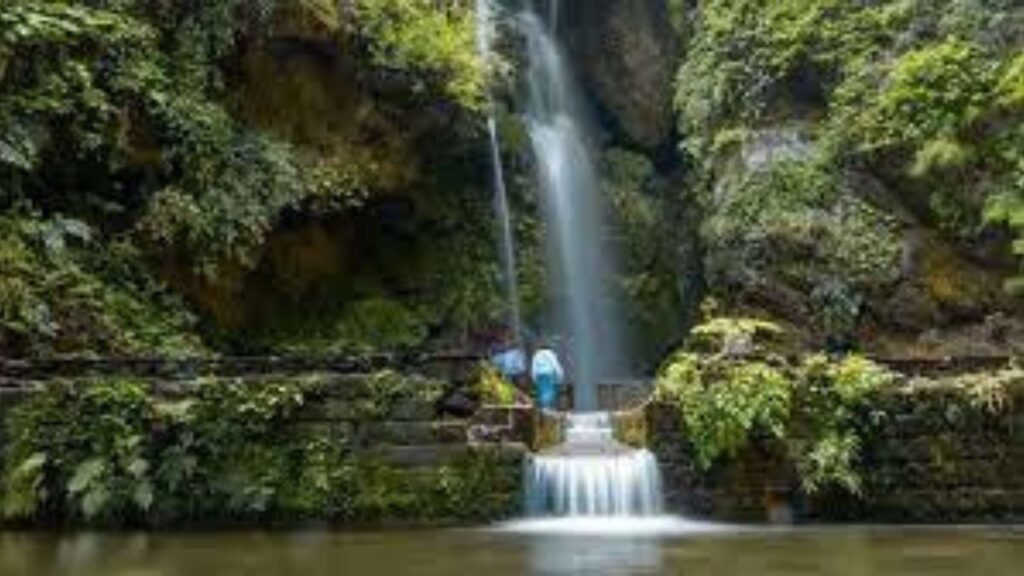
The cold spray hit my face unexpectedly as I rounded the final bend in the trail. There it stood—Jibhi Waterfall in all its thundering glory! I couldn’t help but laugh with pure joy.
Just a 20-minute walk from Jibhi’s main road, this easily accessible waterfall creates a perfect half-day adventure. The multi-tiered cascade tumbles through dense forest, creating several natural pools along the way. I’ve spent hours here with nothing but a book and a packed lunch, listening to the hypnotic sound of rushing water.
Why visit in April: The waterfall reaches peak flow as spring meltwater feeds the streams. The surrounding forest floor is covered with violets and primroses, creating a fairytale setting.
Adventure opportunity: Brave souls can take a quick dip in the lower pool—I lasted exactly 12 seconds in the frigid water before scrambling out, but those seconds were exhilarating! Bring a quick-dry towel and change of clothes if you plan to attempt this.
तीर्थन घाटी

“Just one more cast,” I told myself repeatedly as the setting sun painted the river golden. Fly fishing in the Tirthan River became my unexpected obsession during my stay in Jibhi.
A 30-minute drive from Jibhi takes you to the heart of Tirthan Valley, home to the Tirthan River and part of the Great Himalayan National Park buffer zone. The crystal-clear waters host the prized Himalayan trout, while the riverside trails offer easy hiking with magnificent views.
Why visit in April: Trout fishing season officially opens in April (permit required), and the water clarity is exceptional before the summer melt begins. The weather is perfect for riverside picnics and short hikes.
Responsible travel note: Practice catch-and-release fishing only, and hire a local guide who can show you sustainable techniques. My guide Sushil taught me more about river ecosystems in one day than I’d learned in years.
ग्रेट हिमालयन नेशनल पार्क

My heartbeat quickened as I spotted fresh bear tracks on the trail. “Black bears are shy,” my park guide assured me, but I still found myself scanning the rhododendron thickets with extra vigilance.
This UNESCO World Heritage Site sits adjacent to the Jibhi area and protects one of the Himalayas’ most important ecosystems. The park hosts diverse wildlife including musk deer, Himalayan black bears, and over 200 bird species. Even a day hike into the buffer zone reveals the spectacular biodiversity of this region.
Why visit in April: Wildlife becomes more active after winter, and bird watching opportunities are exceptional as migratory species return. The famous blue poppies begin blooming at higher elevations late in the month.
Practical advice: A permit is required to enter the core zone (arranged through official channels in Sairopa). For casual visitors, the easily accessible Ecozone offers similar experiences without paperwork. Arrange for a knowledgeable local guide—they’ll transform your walk into a living natural history lesson.
Raghupur Fort
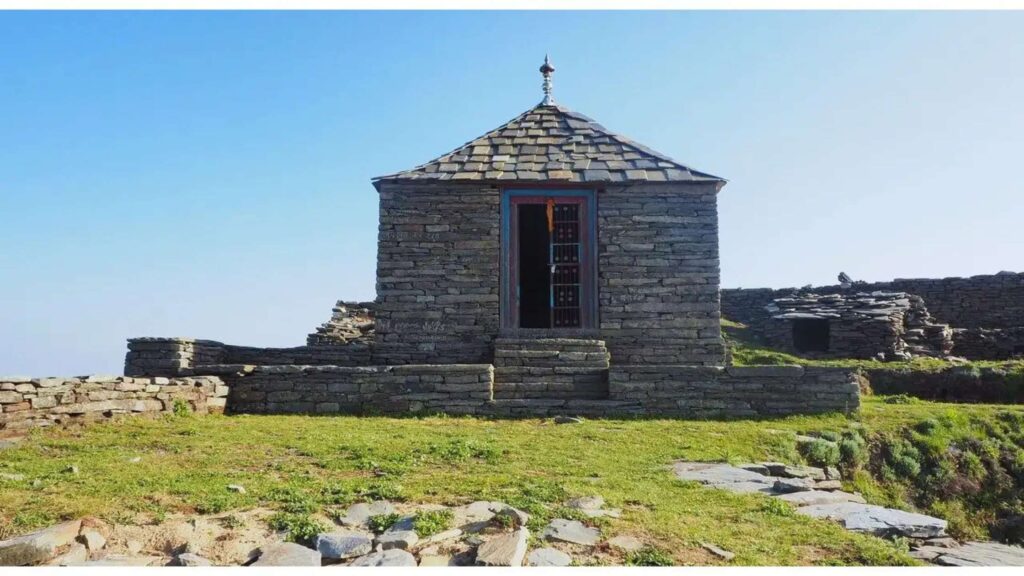
“We’re the only visitors today,” my guide mentioned casually as we reached the ancient stone steps. Having this atmospheric ruin completely to ourselves felt like stepping back in time.
This forgotten fort requires a moderate 4km uphill hike from the village of Banjar. Built in the 17th century, its crumbling walls and hidden rooms create a playground for history enthusiasts. The panoramic views from the top encompass several valleys and dozens of villages.
Why visit in April: The trail passes through blooming rhododendron forests, creating tunnels of red and pink flowers. The clear April skies provide the best visibility for the spectacular mountain panoramas.
Historical connection: Local legends claim the fort was built in a single night by supernatural beings. While hiking, ask your guide about the folklore associated with different parts of the structure—the stories add another dimension to the experience.
Jibhi Nature Trails
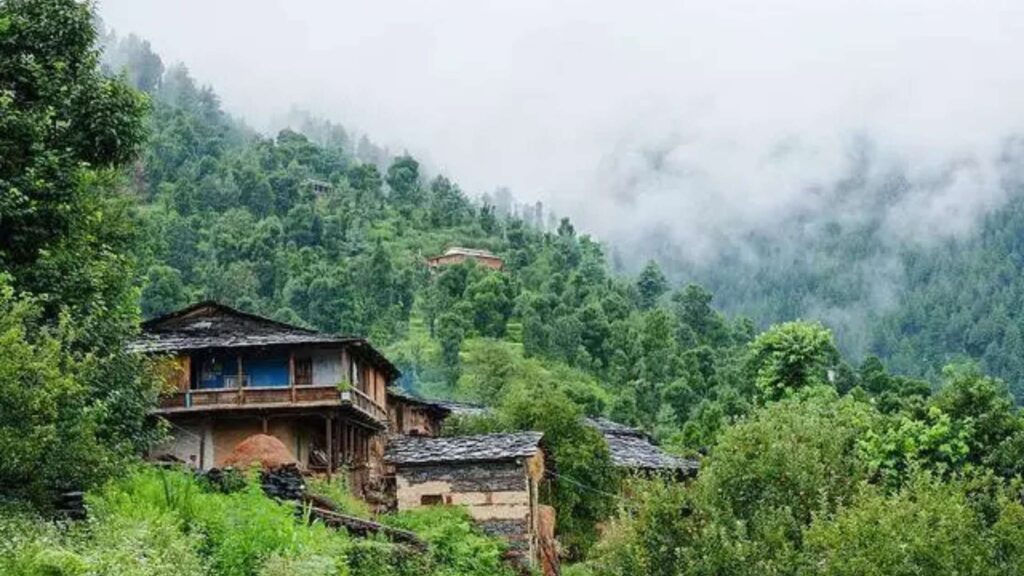
On my final morning, I woke before dawn to follow a local shepherd along his daily route. The silent communion with nature and the simple lifestyle observation provided the perfect closure to my Jibhi experience.
The village is surrounded by numerous unmarked trails that wind through forests, cross streams, and connect to tiny hamlets. These paths offer authentic glimpses into rural Himalayan life and countless opportunities to encounter local flora and fauna.
Why visit in April: The pleasant temperatures make all-day hiking comfortable, and spring brings an explosion of birdlife to the forests. The paths are less slippery than during monsoon months.
Immersive experience: Ask your guesthouse owner to connect you with a local who walks these trails daily. My morning with shepherd Dilawar Singh included sharing salt tea in his family home and learning about sustainable livestock practices that have remained unchanged for centuries.
Planning Your Visit to Jibhi in April
After three visits, I’ve refined the perfect Jibhi itinerary. Plan for 4-5 days so that you can visit all of these places without feeling rushed. Aut, which is 40km away, is the closest notable town, which has overnight bus services from/to Delhi.
There are several options for lodging, from traditional wooden homestays to more modern cottages. I recommend the riverside properties, such as the Himalayan Cottage or The Blue Stream Cottage, both of which provide a unique feel of the place as well as home-cooked meals.
April weather can be unpredictable, so pack for layers, a high-quality raincoat, and comfortable hiking shoes.
The magic of Jibhi isn’t found in luxury amenities or organized tourist activities—it’s in the morning mist rising from ancient forests, the genuine smiles of villagers, and the profound silence of mountains that have witnessed millennia.
As I reluctantly boarded the bus to leave after my first visit, a local shopkeeper smiled and said, “Jibhi never fully leaves your heart.” Three visits later, I can confirm he was absolutely right.
Have you experienced the magic of Jibhi in April? Share your favorite memories in the comments below!
पूछे जाने वाले प्रश्न
Are there good stay options in Jibhi?
Yes, Jibhi offers a variety of stay options including riverside homestays, cozy cottages, boutique hotels, and budget hostels
Is Jibhi a good destination for couples or honeymooners?
Absolutely! With its peaceful vibe, charming wooden cabins, and romantic views, Jibhi is a hidden gem for couples and honeymooners seeking a quiet mountain escape.
How many days are enough to explore Jibhi?
A 3 to 4-day trip is ideal to explore Jibhi and nearby spots like Jalori Pass, Serolsar Lake, and Shoja, while also enjoying some downtime amidst nature.
Is Jibhi safe for solo travelers?
Yes, Jibhi is generally safe for solo travelers. Locals are friendly, and the area is peaceful, though it’s always wise to take standard travel precautions.
यह भी पढ़ें: 10 Best Things to Do Near Rohtang Pass (2025)
